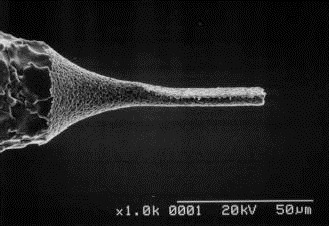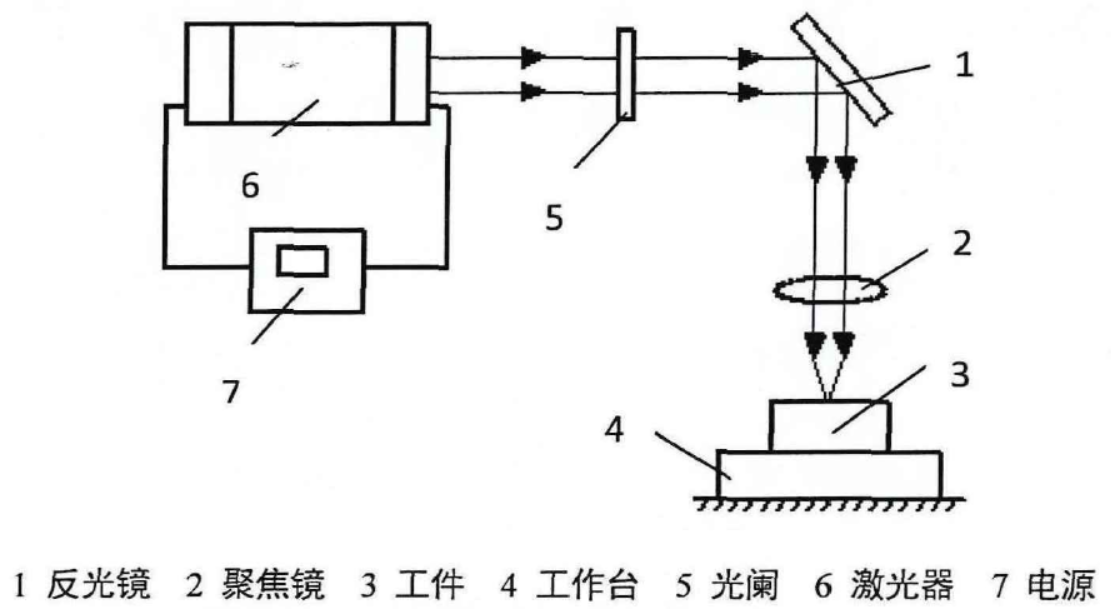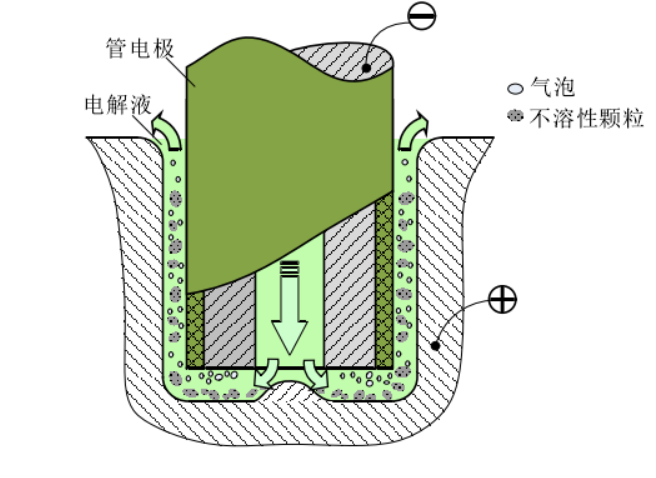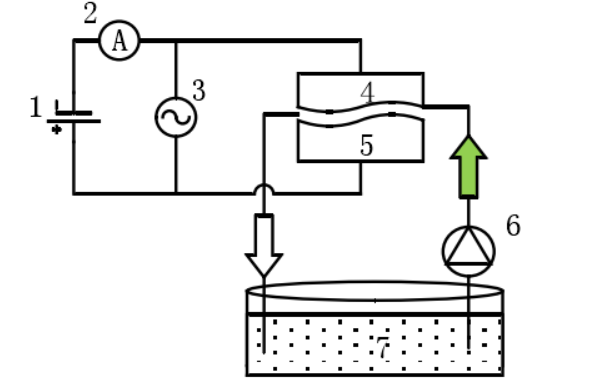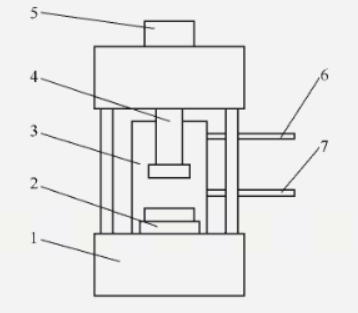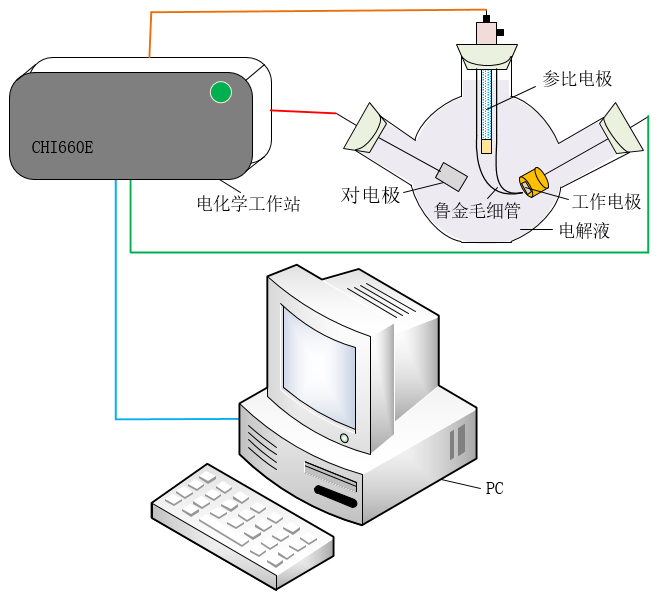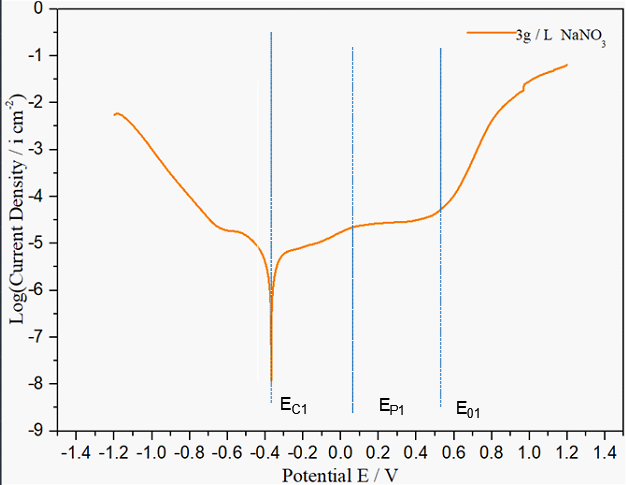微小卫星喷嘴微孔电解加工工艺研究毕业论文
2020-04-15 16:47:36
摘 要
为了探究微小卫星微孔的电解加工工艺,本文介绍了微孔加工的一些背景,与其他微孔加工的方法作比较,了解到了电解微孔加工的优缺点。电解加工是利用电化学的腐蚀作用,通过溶解工件材料来实现加工的方法。引用法拉第定律,介绍微孔电解加工的基本原理,指出对阳极材料溶解的影响因素。并且针对电解加工的特点,简单设计了电解加工机床。通过电化学极化曲线实验,做出电化学极化曲线,得到工件在不通电电解液中的电化学特性。最后选择常用的航天材料镍基高温合金,利用专用的电解打孔机,分别在不同的电压,时间和浓度的条件下进行打孔,以孔径、锥度、材料去除率作为评价指标做出折线图分析得到最合适的条件,并进行了经济性分析,找到微小孔电解加工的最佳方案。
关键词:微小孔电解加工 电解液 极化曲线 孔径分析
Research on micro-hole electrolysis processing technology of micro satellite nozzle
Abstract
In order to explore the electrolytic processing technology of microsatellite micropores, this paper introduces some backgrounds of micropore processing. Compared with other micropore processing methods, the advantages and disadvantages of electrolytic micropore processing are known. Electrolytic processing is a method of processing by dissolving a workpiece material by electrochemical corrosion. The Faraday's law is quoted to introduce the basic principles of microporous electrolytic processing and to point out the factors affecting the dissolution of anode materials. And for the characteristics of electrolytic processing, the electrolytic machining machine is simply designed. Through the electrochemical polarization curve experiment, the electrochemical polarization curve was obtained, and the electrochemical characteristics of the workpiece in the non-energized electrolyte were obtained. Finally, the commonly used aerospace material nickel-based superalloys were selected, and the special electrolytic punching machine was used to punch holes under different voltage, time and concentration conditions. The aperture, taper and material removal rate were used as evaluation indexes to make a line chart. The analysis obtained the most suitable conditions, and carried out economic analysis to find the best solution for micro hole electrolysis processing.
Key words: micropore electrolysis;electrolyte;polarization curve;pore size analysis
目 录
摘要…………………………………………………………………………………………………Ⅰ
ABSTRACT ………………………………………………………………………………………Ⅱ
第一章 绪论………………………………………………………………………………………1
1.1微小孔应用背景 1
1.1.1喷油嘴喷孔 1
1.1.2液压阀阀孔 2
1.2微小孔加工技术研究现状 3
1.2.1传统钻削加工 3
1.2.2激光加工 4
1.2.3电火花加工 5
1.2.4电解加工 6
1.2.5超声波加工 7
1.3微孔电解加工国内外研究现状 7
1.4本论文研究内容及意义 10
第二章 微孔电解加工基本原理及机床设计 11
2.1微孔电解加工基本原理 11
2.1.1法拉第定律 12
2.2电解加工机床设计 13
2.2.1机床设计要求 13
2.2.2机床的主要组成部分 13
2.3本章小结 15
第三章 电化学极化曲线测试实验 16
3.1.实验装置的搭建 16
3.2极化曲线测试实验结果及分析 17
3.3本章小结 21
第四章 微孔电解加工实验数据处理与分析 24
4.1实验条件及参数设置 24
4.2实验结果及分析 25
4.2.1电压幅值对制孔效果的影响。 25
4.2.2 电解时间对制孔效果的影响 28
4.2.3工作液浓度对制孔效果的影响 31
4.3经济性分析 36
4.4本章小结 36
第五章 结论与展望 38
5.1论文研究总结 38
5.2微孔电解加工的前景 38
参考文献 40
致谢 43
第一章 绪论
1.1微小孔应用背景
进入新世纪以后,我们国家的航空航天事业取得了飞速的进步。在航空航天领域中,机械零件的精密度要求越来越高。其中,有很多零部件都具有微孔结构,比如卫星喷嘴和液压阀阀孔。这类孔结构一般加工要求比较高,加工难度较大,而且对零部件的性能影响非常大。所以孔加工技术的研究日趋重要,同时微孔加工不仅仅应用于航空航天事业,也应用于医疗器械,电子产品,精密磨具,汽车行业等等。下面一喷油嘴和液压阀阀孔为例来介绍微小孔基本特点。
1.1.1喷油嘴喷孔
喷油嘴喷孔是柴油发动机的供油系统核心部件,用来雾化燃料。柴油机工作时对喷油嘴喷孔的压力较大,所以喷油嘴喷孔的材料必须是高强度材料。所以喷油嘴喷孔的加工技术是柴油机制造的关键技术。
柴油机喷油嘴喷孔的孔径不高于0.4mm,小孔深径比较大, 喷油嘴的表面质量要求高,表面粗糙度和精度直接影响工作效果[1]。喷油嘴的喷孔直径约小,喷雾越细。喷油孔的表面粗糙度越好,精度越高,喷雾越均匀。喷油嘴的结构特种决定了燃油燃烧的效果和喷雾雾化效果,使柴油机达到绿色节能减排的目的。所以对柴油机喷孔孔径参数的优化成为了关键的技术问题[2]。
以上是毕业论文大纲或资料介绍,该课题完整毕业论文、开题报告、任务书、程序设计、图纸设计等资料请添加微信获取,微信号:bysjorg。
相关图片展示:
